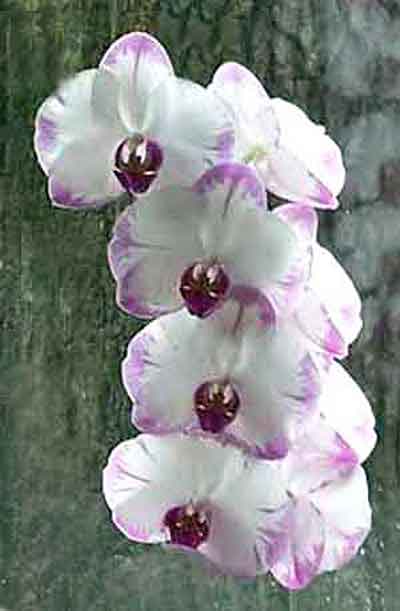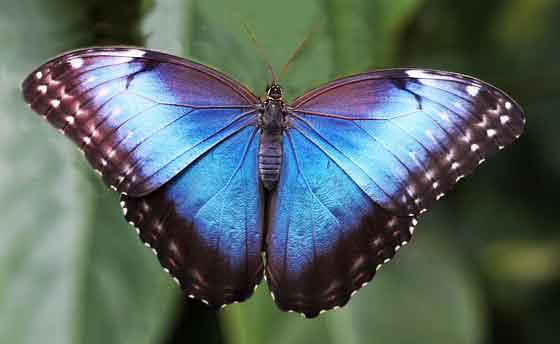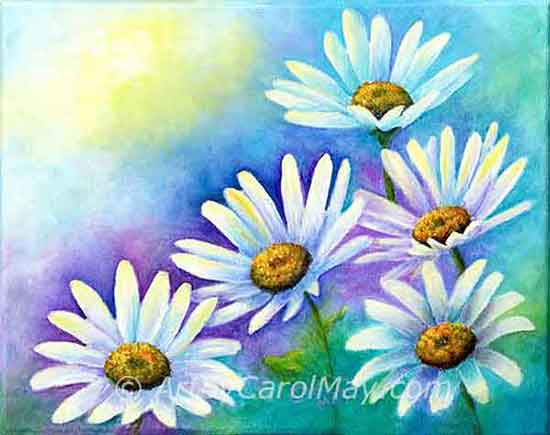- Home
- Orchid Care
do you want to know how to care for orchids?
Growing orchids in the home:
If you grow houseplants, you already know how to care for orchids.
Orchids are one of the modern houseplants that are easy to take
care of with just light, house temperatures, water and
a little fertilizer. They are such beautiful gifts of God!
There are more types of orchids throughout the world than any other plants. All the different types give the gardener a wide selection of forms and colors.
The orchids suitable for home culture are; Phalaenopsis, Cattleyas, Dendrobiums, Paphiopedilums, Oncidiums and Cymbidiums
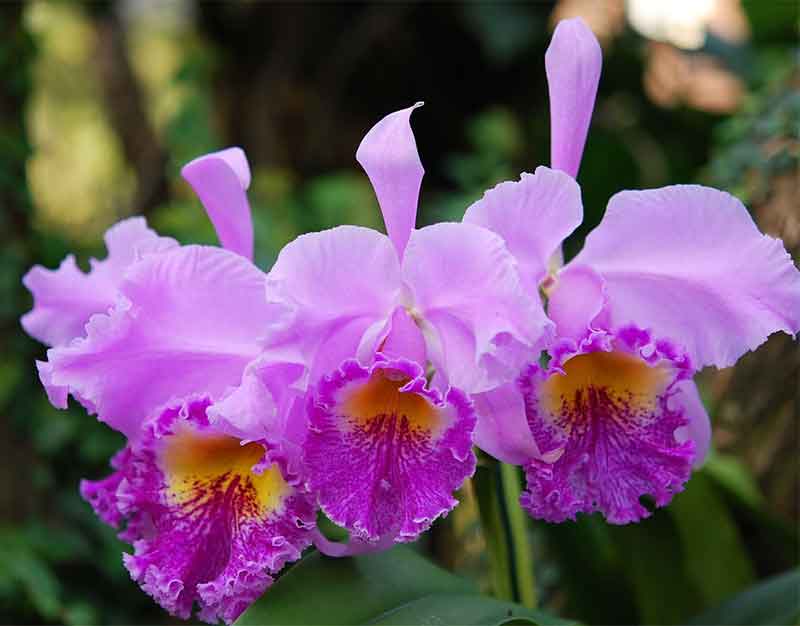 Beautiful cattleya orchids.
Beautiful cattleya orchids.how
to care for orchids
When you start out with orchids, buy mature plants.
Many orchids take several years before they flower. With mature plants you can enjoy their beautiful flowers without waiting for years.
Phalaenopsis are an exception; they flower while they are very young. But even a young phalaenopsis may take a year before they flower.
So, to be safe, purchase orchid plants that are already flowering.
Watering
Orchids
Correct watering is the most important part of how to care for orchids.
Follow the 1, 2 and 3 of watering orchids:
- Water early
in the day to prevent leaf diseases. Moisture on the leaves during cool
night temperatures can cause leaf diseases.
Take special care when watering phalaenopsis to not get water down in the crown where the leaves attach together. This may cause crown rot and the eventual demise of the plant. - Water until
you see water coming out of the bottom of the pot.
Thorough watering will flush the extra salts out of the pot. Salt build-up in the pot may cause the roots to burn.
After you have watered, wait until the extra water had drained out of the pot. Then pick up the pot and feel how heavy it is.
Give the plant a chance to dry out before you water again. - Don't water
again until the potting medium is dry on top. The pot should feel light,
compared to how heavy it was after watering last time.
If the roots stay constantly wet, they will rot and die. This is so important in learning how to care for orchids!
Not enough water is better than, too much water.
water
Epiphyte and terrestrial orchids differently
The epiphyte orchids grow hanging onto tree trunks, branches or on rocks. They have developed a root system that can store water. This type of orchid needs to dry out between waterings.
The cattleya and dendrobium orchids have an enlarged stem, called a pseudobulb to store water. They must dry out completely between waterings.
Phalaenopsis, also live in trees. The do not have an enlarged stem, but their roots can store extra water. Let the top of their potting mix dry, but they will still have moisture down in the pot.
Terrestrial orchids in the wild grow on the ground. They have a finer root system that is unable to store extra water. They need to stay a bit moist at all times, but not soppy wet. Lady Slippers are a terrestrial orchid.
Too much water is a common cause of orchid death.
Light
for Orchids
Light is the second most important item of how to take care of orchids.
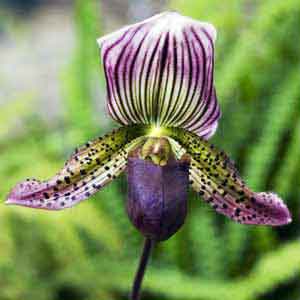 Lady Slippers grow in low light.
Lady Slippers grow in low light.Orchids need light to make them grow and flower.
A lack of light means not enough food to produce the beautiful orchid flowers.
- East and south facing windows are good for growing orchids.
- Growing orchids need bright, diffused light.
- Place them at or near a window, in a porch, patio or in a sun room.
In nature they grow in or under trees in dappled sunlight. Rarely would you find them growing in the direct sun.
Our homes provide the diffused light they require.
too
much light
West windows
get too hot and may cause the plant to burn.
 Cattleyas require a lot of light.
Cattleyas require a lot of light.Orchids need light to grow, so more is better? Not necessarily, too much light can cause damage.
Only use west windows that have an awnings or shade cloth.
The danger of too much hot sun is that the plant will transpire (evaporate water from the leaves) in an effort to cool itself.
If the orchid plant can't keep up or if it runs out of water, the leaves will burn.
The only orchid maybe, safe to grow in a west window would be a dendrobium orchid or the mule-ear type of oncidium because they have heavy leaves.
Fertilizing
Orchids
Use an orchid fertilizer once a month during the warm growing months.
-
Orchid fertilizer is good or use a regular 10-10-10 fertilizer.
- Orchids growing in bark should get a weak strength fertilizer every watering.
- Make sure there is moisture around the roots before applying fertilizer.
- If the plant is dry, water it one day and fertilize the next day.
- When the plant is dry, the fertilizer will be too strong and burn the orchid's roots.
Fertilizer is called "plant food" but it is just actually salts and minerals. Plants pick up water and minerals (fertilizer) through the roots, but they require carbohydrates for food.
The carbohydrates (food) for the plant are produced in the leaves of the plant by photosynthesis. Photosynthesis only works only in the presence of light.
 Dendrobium orchids are good cut flowers.
Dendrobium orchids are good cut flowers.how to care for orchids: Temperatures they like
Orchids like the same temperatures
people enjoy, 60-80 degrees. That makes growing orchids in the home easy.
- 65-75 day / 55-60 night - These are great temperatures for cattleyas, dendrobiums, oncidiums and hybrid paphiopedilums.
- 70-85 day / 60-65 night - Phalaenopsis, vandas, and tropical paphiopedilums like these temperatures.
Keep the orchids that like it warmer away from the window, so they get the warmth from the room.
Move your phalaenopsis away from the windows at night time, if you live where there are cold winters.
- 50-55 night / 60-70 day - Many orchids will not flower properly, if the temperature is maintained below 60 degrees.
However, paphiopedilums (Lady
Slippers) and cymbidiums are cooler growing orchids. They would be happy at
During the winter keep the cool loving orchids growing near the window glass. They like the cool temperatures to promote flowering.
Even during summer nights move your Lady Slippers up close to the glass to enjoy the cooler temperatures.
Phalaenopsis orchids are easy to grow indoors
The light and temperatures of our homes make Phalaenopsis orchid care easy.
 A semi-alba Phalaenopsis
A semi-alba PhalaenopsisPhalaenopsis is very popular. We find them in all the garden stores, building supplies and even in Walmart.
People call the 'Phals' for short. They are a wonderful gift from God. They are the easiest orchid to grow in our homes.
Phaleanopsis may also be called Moth orchids.
When they were first seen in the jungle, they looked like white moths fluttering in the breeze. Hence the term "Moth Orchid" came into being.
Modern white Phals have been refined and bred up in size. Their white flowers and plants are large compared to another Phalaenopsis.
Now-a-days we can get Phalaenopsis orchids in a variety of colors and sizes.
- The stunning semi-alba has white petals with red lips.
- There are beautiful pinks, from
light to dark pink, even yellows.
- The intergeneric cross of a Phal
with a doritis is called a doritaenopsis. It has slightly smaller flowers that come in hot pink colors. They bloom a bit later than the Phals
extending the flower season well into summer.
- There are Phals with spots,
splashes, blotches and blushes in all sorts of colors.
- Miniature Phals have been available the past few years. They can fit comfortably on a windowsill.
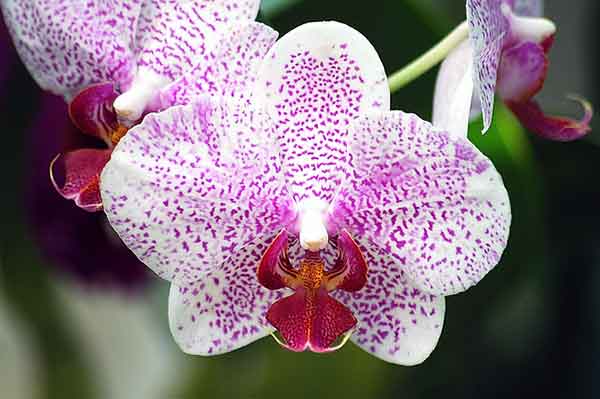 A stunning French-spots Phalaenopsis
A stunning French-spots Phalaenopsisre-potting is part of how to care for orchids
- Orchid plants in bark require repotting about every year. Soak the bark in water for an hour or two before potting.
- Orchids in sphagnum moss are good for about three years. Wet the moss before using it and squeeze out the extra water.
- Young Phalaenopsis that are still growing should be repotted every year.
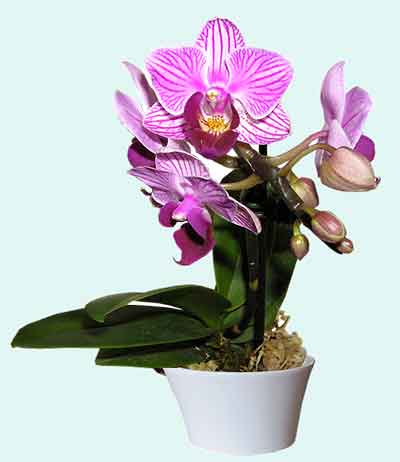 Sphagnum moss is my favorite.
Sphagnum moss is my favorite.Potting is usually done in the summer after they are finished flowering.
Orchids will be growing during the warm months. That way the roots will grow and establish into the new potting medium.
Take the plant out of the pot and remove all potting medium, wash the roots under running water to remove the last bits of medium. Cut off any broken or rotted roots.
Place the plant in a clean pot with plenty of drain holes.
It's best is to use an orchid pot that has holes on the sides of the pot. Then the air can get in around the roots.
Pack the potting medium firmly around the roots. Water the plant. When the pot feels light, it's time for the regular watering.
painting orchids
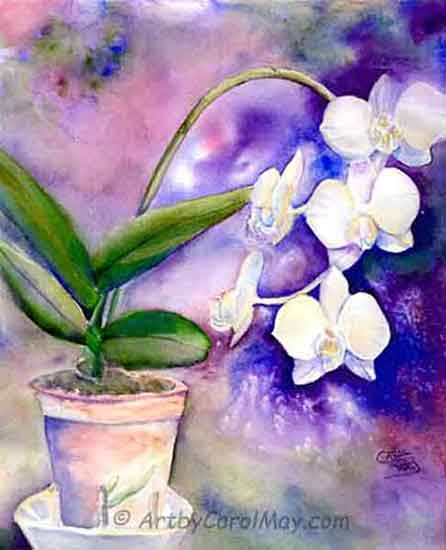 White Flight
White FlightPhalaenopsis orchid care is one of my hobbies. Painting is another of my hobbies.
This painting is of a Phal in a clay pot. I liked the complimentary colors of the clay pot.
Phals actually are happier in plastic or glazed ceramic pots because they hold the moisture better. They dry out too fast in terracotta pots.
During painting, I was thinking about wild Phals in the jungle and how they look like white flying moths.
So, this painting is named "White Flight".
Growing and caring for orchids has been one of my passions for many years. They bring so much joy.
Learning how to care for orchids are so rewarding!
Recent Articles
-
How Do We Paint Good Art?
 You can create good art with the big three!
Understand how to paint good art with your composition, values and color choices.
These three things create diverse and captivating artwork!
You can create good art with the big three!
Understand how to paint good art with your composition, values and color choices.
These three things create diverse and captivating artwork! -
How to Paint a Dog
 It's easy to paint this fun dog on canvas.
A step-by-step dog painting with professional techniques on how to use oil paints.
This dog painting tutorial uses only 3 colors.
It's easy to paint this fun dog on canvas.
A step-by-step dog painting with professional techniques on how to use oil paints.
This dog painting tutorial uses only 3 colors. -
Ideas for Your Home Art Studio
 Get your creativity flowing with your own art space. Where would be a good place to put your art studio and what should you put it? What's the best light for painting? What about supplies and furnitur…
Get your creativity flowing with your own art space. Where would be a good place to put your art studio and what should you put it? What's the best light for painting? What about supplies and furnitur… -
The Steps on How to Paint a Painting
 You will amaze your friends when you know how to paint a painting.
Learn the basic steps of painting a picture.
Get the important guidelines for painting with watercolors & oils.
You will amaze your friends when you know how to paint a painting.
Learn the basic steps of painting a picture.
Get the important guidelines for painting with watercolors & oils.
Recent Articles
-
How Do We Paint Good Art?
 You can create good art with the big three!
Understand how to paint good art with your composition, values and color choices.
These three things create diverse and captivating artwork!
You can create good art with the big three!
Understand how to paint good art with your composition, values and color choices.
These three things create diverse and captivating artwork! -
How to Paint a Dog
 It's easy to paint this fun dog on canvas.
A step-by-step dog painting with professional techniques on how to use oil paints.
This dog painting tutorial uses only 3 colors.
It's easy to paint this fun dog on canvas.
A step-by-step dog painting with professional techniques on how to use oil paints.
This dog painting tutorial uses only 3 colors. -
Ideas for Your Home Art Studio
 Get your creativity flowing with your own art space. Where would be a good place to put your art studio and what should you put it? What's the best light for painting? What about supplies and furnitur…
Get your creativity flowing with your own art space. Where would be a good place to put your art studio and what should you put it? What's the best light for painting? What about supplies and furnitur… -
The Steps on How to Paint a Painting
 You will amaze your friends when you know how to paint a painting.
Learn the basic steps of painting a picture.
Get the important guidelines for painting with watercolors & oils.
You will amaze your friends when you know how to paint a painting.
Learn the basic steps of painting a picture.
Get the important guidelines for painting with watercolors & oils.
